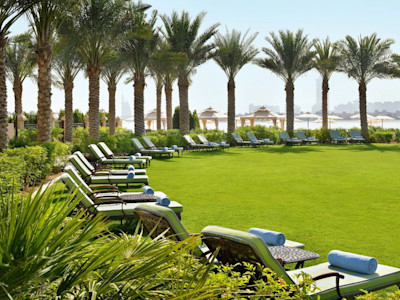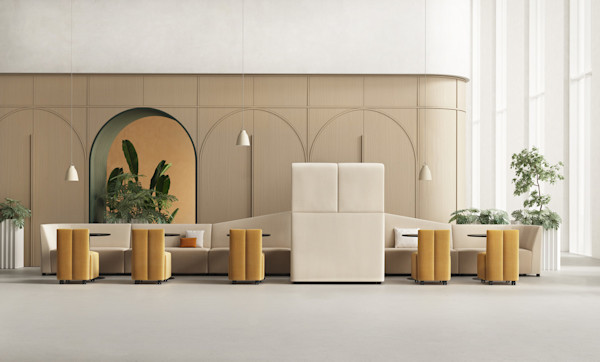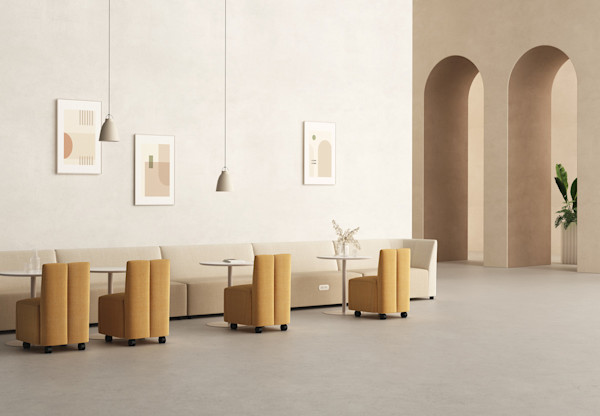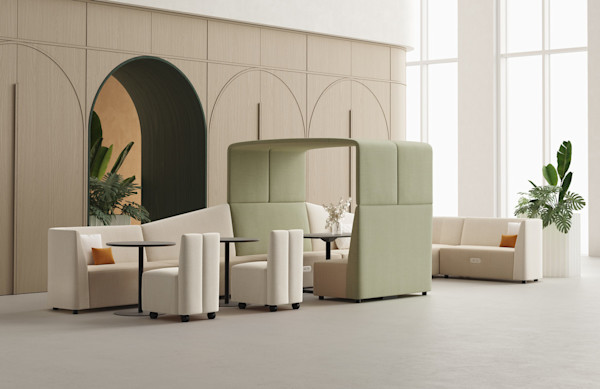Why Does the Hospitality Industry Continue to Grow?

The hospitality industry took a major hit during the COVID-19 pandemic. Hotels, restaurants, attractions, and many more subsets of the hospitality industry suffered from restrictions and full-blown shutdowns. On top of that, for a short period of time, travel was nearly impossible. However, despite the impact the pandemic had, the hospitality industry is bouncing back.
Although the hospitality industry faces its fair share of challenges, it has proven itself resilient time and time again. Rapid growth and the return to “normal” over the last couple of years have helped the industry right itself. But what is driving the bounce back, and how does the industry look today?
Is the Hospitality Industry Growing?

Find solutions for creating a welcoming space for visitors
Yes, the hospitality industry is growing, but that’s not hard to do after hitting record lows. So what does the industry look like now compared to pre-pandemic numbers? EHL Insights put together a comprehensive report about the hospitality industry and the four main subsets. This includes food and beverage, travel, lodging, and recreation.
During 2020, the tourism industry saw a regression to a state nearly 30 years ago. Within 2 years of the pandemic, the hospitality industry saw a compound annual growth rate of 7% from 2022 to 2023 – more than forecasted – with signs of continued growth. But what has driven this bounce back, and what will continue to impact the growth? The emergence of new technology, trends, and perceptions all play a major part in the projected growth.
What is driving the Hospitality Industry Growth?

EHL Insights attributes the growth of the hospitality industry to a few impactful changes. One of the biggest changes has been the spike in global GDP. According to Statista, there was a 6.47% growth in global GDP. Since then, the numbers have leveled out. However, it’s that spike that the rapid growth can be attributed to. But that explains the initial growth – so why does it continue to grow?
Wellness
Society’s outlook and thirst for travel have shifted. In the last few years, mental health and wellness have become a focus in the workplace and something that people have really taken to heart – especially travelers. The Global Wellness Institute highlights the importance of what has come to be known as wellness tourism.
Wellness tourism is a form of tourism or an approach to travel. The idea of traveling to maintain or increase one’s wellness isn’t new. But wellness tourism isn’t a spiritual journey to find yourself. Wellness tourism is centered around promoting a healthy lifestyle, reducing stress, and having experiences that can change your worldview.
Corporate Travel
EHL Insights attributes a portion of the surge in hospitality growth to the increase in business trips. The spike in global GDP is a sign of economic expansion. According to Deloitte, the return to office initiatives is driving a large portion of the increase in corporate travel as well. Companies are expected to increase their travel budgets. But employees are starting to look at corporate travel in a different way – as leisure travel.
Bleisure travel is a blend of business and leisure. Where business trips have previously been viewed as an inconvenience, employees are now starting to look at it as an opportunity. According to CVENT, employees are extending their business trips and extending them into personal trips. This is especially true for younger business travelers.
Airline and Travel Costs
NerdWallet’s Travel Price Index reports a drop in travel costs year over year. This is primarily comprised of airfare, car rental, and hotel prices. However, when compared to pre-pandemic travel costs, there’s a significant increase. Compared to other consumer goods, the NerdWallet Travel Price Index shows a relatively small increase over the past five years. In short, traveling is more easily attainable.
What do Travelers Look For?

Industries are continuously evolving. Whether it’s new technology or complementary goods or services, there’s always something driving growth in a sector. And the hospitality industry is now different. However, the shift toward wellness has made lodging reassess its accommodations. Environmentally conscious consumers are driving energy-saving and efficient buildings. And one of the most important things – comfort.
The idea of wellness tourism has led to hotels and resorts adding on-site amenities. These additions to lodging can include on-site spas, gyms, easy access to recreation, and unique retreats. Travelers know what they want out of a trip or vacation, and they’re turning to lodging that can provide them with what they need.
The hospitality industry – like others – has become more environmentally conscious over recent years. The idea of supporting a green company is at the forefront of many people’s minds. This is driving tourists to choose more environmentally friendly options when traveling. Electric cars, energy-efficient rooms, and sustainable food sourcing are all having an impact on how consumers travel.
Lodging has evolved over the past few decades. Luxurious accommodations and rooms used to only be found in higher-scale hotels and resorts. With many hospitality groups acquiring smaller brands, that standard of comfort is being translated across all brands. This allows travelers to stay in much nicer places without the higher price tag.
Creating a Hospitable Space

Learn more about building a hospitable space
In the world of travel, whether it be food and beverage, travel arrangements, or lodging, companies are doing everything they can to differentiate themselves from the competition. Design, brand image, and atmosphere do just that. From themed rooms to gyms to coworking business centers, hospitality is constantly improving. But how do they create hospitable spaces for guests?
Although it’s usually not the highlight of a trip – except for all-inclusive resorts and the like – hotels try to make it a memorable part of the trip. However, this wouldn’t be possible without a hospitable space. The lobby and business center is usually one of the first things travelers see when walking into a hotel.
Lobbies usually reflect the brand. From color schemes to artwork to themes, the lobby sets the tone for the brand. Although some hotels take a more minimalist approach to design, they’re often reflective of the experience. Some hotel lobbies might be smaller and more quaint. Others might be large and grandiose. Regardless, it should be hospitable. The furniture used in a space can achieve that.
Sprawling lounge seating and other soft seating can keep travelers comfortable while checking in. Occasional laptop tables allow travelers to work while on the road and this type of furniture used is often modular and provides travelers with adaptive spaces.
With the increase of corporate travel, a well-equipped business center is becoming a non-negotiable. Travelers now have a need for more than just a desk and a computer. Business centers are replicating the work environment that’s found in the office. This might include modern office cubicles, ergonomically designed task chairs, and other elements you find in an office. There’s a reason this combination of hospitality and work is also being recreated in offices with work resorts.
The Future of the Hospitality Industry
Travelers will always have a thirst for adventure. However, that adventure looks different to everyone. To some, it might be the gentle lapping of waves on a remote tropical beach. To others, it might mean exploring the concrete jungle and getting a taste of city life. Regardless of why people travel, there will always be a demand in hospitality.
Although the surge over the last few years can somewhat be attributed to the bounce to pre-pandemic numbers, growth is still looking positive. Innovation creates opportunities in every sector of the industry. All aspects of travel are becoming a destination. People have always traveled and will continue, but the industry growth is looking very positive.
Whether it’s for business or pleasure – or both – next time you travel, take it all in. The spaces, the amenities, and the innovation in travel are all reflective of a growing industry and consumers’ expectations. It’s safe to say the hospitality industry is going places, literally and figuratively.
Interested in learning more about non-traditional office design? Check out these related posts:



